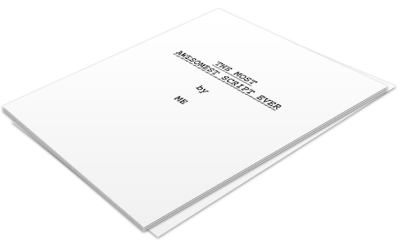
How to Write a Great Explainer Video Script
A great script is the backbone of a great video. It lays the foundation for the video and how the message is delivered. You need to structure it well so that you can introduce what pain you solve and how you solve it, along with how your product / service / company works.
Here is a common way to approach the structure of the script:
1. The Problem: You need to tap into the emotions of your viewers / users. Just like a good pitch deck (for you all you capital-seeking startups), you should lead with what problem you solve.
2. The Solution: Next, mention how you’ll solve that problem in the form of a value proposition. It’s best to keep this short and sweet so that your viewer gets it immediately. Describe the benefit you provide, not your features. (Optional: you can introduce your company name and logo here.)
3. How It Works: This is where you elaborate on the solution and introduce some detail about your product / service. Mention features, but again, don’t forget to include the benefits of those features. Also, most buyers will know about your competition, so mention the factors that differentiate you from them.
4. Wrap Up: This is where you mention your company and tagline, introduce the logo, and summarize your value proposition in one line. This should be short and memorable.
Your script doesn’t have to be laid out in this manner (after all, this is a creative process), but this is an intuitive and natural way for a viewer to comprehend an idea.
Some notes to consider when scripting:
Consider the Length – As a rule of thumb, every 140 – 180 words of a script will take one minute in a voiceover (varies based on your chosen artist), and the length of the voiceover is generally how long your video will be (unless you’re showing something visually during a pause in the voiceover, such as a screencast).
Write Visually – Write your script in a way that’s easy to animate; use words that are visual in order to create a cohesive video. For example, saying “We build a mountain of data…” is much easier to turn into a visual representation than saying “We get data…”. It’s easy to connect a mountain of data to a visual item.
Consider Humour – People are more engaged with humorous material and will pay attention for longer if you can entertain them. Don’t force it though.
Guide Your Voiceover Artist – Let the voiceover artist know your preference for the tone, pace and style you want them to take with it, as well as which words/phrases you want them to emphasize, and where you want them to pause. Provide all of this in the script.
Make it Natural – This may not apply to every script, but as a general rule, write in a natural and conversational manner and in a way that you want it to sound. In most cases, “So you’re looking for a demo video…” sounds better and more intuitive than “So you are looking for a demo video…”; the latter sounds too mechanical and isn’t how people naturally speak.
Ditch the Jargon – Don’t sound like an infomercial or use generic jargon like “revolutionary” or “industry leading” — people tend to dismiss this kind of language. Tell your viewers how you solve their problems and let them decide on their own whether you’re “revolutionary”.
Make it Personal – Speak directly to your audience; say “So you’re looking to save money on…” instead of “When one is looking to save money on…”. This reinforces the personal connection.
Create a Story – Don’t just write a script of facts… instead, talk to your audience with an emotional story that they can relate to. Google did an amazing job of this with their Superbowl ad – instead of stating boring facts about what a search engine does, they created a love story where someone goes to Paris, meets a girl, finds out how to impress her and marries her… all using Google.
